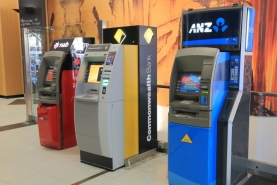In Focus
Mobile wallets trump cash as India's e-payments grow forty-fold
Consumers are increasingly using e-wallets for their daily transactions like food and transport.
Mobile wallets trump cash as India's e-payments grow forty-fold
Consumers are increasingly using e-wallets for their daily transactions like food and transport.
E-commerce titans shake the ground of retail banking
Should banks worry now that they have new competition?
Hong Kong banks bust out the chatbots
Digital savvy clients may soon prefer to interact more with chatbots.
China's increasing use of medium-term facilities is a win for banks
It benefits banks' funding structure and lifts profits.
58% of APAC banks aspire to reach digital maturity by 2020
They focus on digital innovations to improve risk management.
China unveils rules to clamp down on financial risk
China Banking Regulatory Commission targets to eliminate "chaos" in the financial system.
What provisions will trend post-MFRS 9 implementation?
Malaysian banks adopted the new standard on January 1, 2018.
Low profitability and insufficient capital haunt Chinese banks
Even their improved asset quality cannot mask these concerns.
How Hong Kong banks can fight financial crime in 2018
Banks will continue to develop the use of technology and data analytics for AML.
What the new Basel IV rules could mean for banks
The use of banks’ own internal models to calculate their RWA will be limited under the new rules.
Why private sector leverage levels are high in many APAC banking systems
Leverage levels are particularly high in China, Hong Kong, Singapore, Korea and Vietnam.
Rise of the chatbots: Here's how Singapore's big banks are adopting fintech
54% of fintechs have focused on banks.
The Big Short: Asia Pacific banks still prefer bailouts to bail-ins
Hong Kong has made the most significant advance with its bank resolution regime.
Indian banks' IT spending to hit $9.1b in 2017
Devices spending in the sector will grow the fastest at 20%.
Why Chinese shadow banking activity stopped growing in 1H17
Nominal GDP also grew faster than shadow banking assets.
Australian banks to battle headwinds from the cooling housing market
Moderating housing loan growth could drag banks' profitability.
Chinese banks' 1H17 asset growth significantly slower than in the past decade
Assets grew by only 4.4%.


















 Advertise
Advertise


















